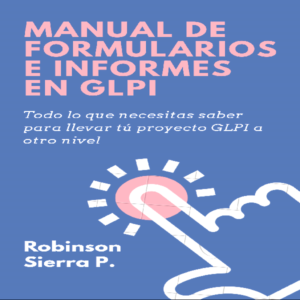The thesis of this book is that Etruscan is an Indo-European language, in particular an Anatolian one, characterized by an archaic morphology and a Semitic lexicon. This is based on solid linguistic and historical evidences.
The Etruscan language probably sinks its roots in the first half of the 2nd millennium BC, when Semitic-speaking Assyrian merchants settled in Central Anatolia organizing a wide commercial net between Assyria and Anatolia. The cuneiform texts they produced, attest 35 large and small Assyrian merchant settlements (kārums and wabartums) in different areas during more than two centuries (1950-1719 about).
These merchants lived in self-governing enclaves, protected and regulated by local Authorities. They were conscious to be heirs and bearers of a superior civilization and continued speaking the Assyrian language within their families, even if they were living in the composite Anatolian linguistic world. Their cuneiform tablets, that have been discovered nowadays, represent the first forms of writing in Anatolia. For the first time, Anatolians learned how to read and write and, thanks to the contact with the ancient Mesopotamian tradition, how to administrate a nation and acquired foundations of legal and administrative systems. Assyrian merchants called natives nuwā'um: (A Concise Dictionary of Akkadian 2000 p. 259): “...nuwā'um “unintelligent; barbarian” OldAkk as desig. of native Anatolians; Middle/NeoBab “stupid (person); nuwā'uttum in n. epāšum “to carry out affairs of natives”.
Cuneiform texts reveal and also attest a succession for at least six or seven generations of mixed, Assyrian-Anatolians, bilingual families. We believe that these families remained in Anatolia when kārum period ended, because they became part of the local population like other groups and ethnic minorities. It is an ethnic minority, who remained close to Assyria, preserved for generations its lexical patrimony and completed it with different morphological aspects of Anatolian languages.
From a linguistic point of view, scholars have had difficulties to include the Etruscan language in a well-known linguistic family because of its peculiarities. Indeed, Etruscan reveals an Indo-European imprint like other Anatolian languages of the 2nd millennium BC, but it stands out for its archaic morphology. Furthermore, the Etruscan lexicon is not close to any ancient Anatolian language, but refers to the lexicon of the Akkadian universe, where Assyrian dialect seems to be prevalent. This is also justified by the comparison of about 20 morphological forms and 100 Etruscan lexical voices with the morphology and lexicon of Near Eastern languages, here investigated.
Linguistic scholars know that, with time, some languages acquired Indo-European morphology and syntax without giving up their lexicon.
Nowadays, scholars of the Etruscan language consider probable that first colonists coming from Anatolia, arrived in Etruria in 1200/1100 BC, after the fall of the Hittite empire that occupied all Central Anatolia and after the fall of Mycenaean empire.
In this book, we also draw cultural concurrences and likenesses, social and genetic affinities between Etruscans and the ancient Anatolian people.
The Etruscan language probably sinks its roots in the first half of the 2nd millennium BC, when Semitic-speaking Assyrian merchants settled in Central Anatolia organizing a wide commercial net between Assyria and Anatolia. The cuneiform texts they produced, attest 35 large and small Assyrian merchant settlements (kārums and wabartums) in different areas during more than two centuries (1950-1719 about).
These merchants lived in self-governing enclaves, protected and regulated by local Authorities. They were conscious to be heirs and bearers of a superior civilization and continued speaking the Assyrian language within their families, even if they were living in the composite Anatolian linguistic world. Their cuneiform tablets, that have been discovered nowadays, represent the first forms of writing in Anatolia. For the first time, Anatolians learned how to read and write and, thanks to the contact with the ancient Mesopotamian tradition, how to administrate a nation and acquired foundations of legal and administrative systems. Assyrian merchants called natives nuwā'um: (A Concise Dictionary of Akkadian 2000 p. 259): “...nuwā'um “unintelligent; barbarian” OldAkk as desig. of native Anatolians; Middle/NeoBab “stupid (person); nuwā'uttum in n. epāšum “to carry out affairs of natives”.
Cuneiform texts reveal and also attest a succession for at least six or seven generations of mixed, Assyrian-Anatolians, bilingual families. We believe that these families remained in Anatolia when kārum period ended, because they became part of the local population like other groups and ethnic minorities. It is an ethnic minority, who remained close to Assyria, preserved for generations its lexical patrimony and completed it with different morphological aspects of Anatolian languages.
From a linguistic point of view, scholars have had difficulties to include the Etruscan language in a well-known linguistic family because of its peculiarities. Indeed, Etruscan reveals an Indo-European imprint like other Anatolian languages of the 2nd millennium BC, but it stands out for its archaic morphology. Furthermore, the Etruscan lexicon is not close to any ancient Anatolian language, but refers to the lexicon of the Akkadian universe, where Assyrian dialect seems to be prevalent. This is also justified by the comparison of about 20 morphological forms and 100 Etruscan lexical voices with the morphology and lexicon of Near Eastern languages, here investigated.
Linguistic scholars know that, with time, some languages acquired Indo-European morphology and syntax without giving up their lexicon.
Nowadays, scholars of the Etruscan language consider probable that first colonists coming from Anatolia, arrived in Etruria in 1200/1100 BC, after the fall of the Hittite empire that occupied all Central Anatolia and after the fall of Mycenaean empire.
In this book, we also draw cultural concurrences and likenesses, social and genetic affinities between Etruscans and the ancient Anatolian people.












